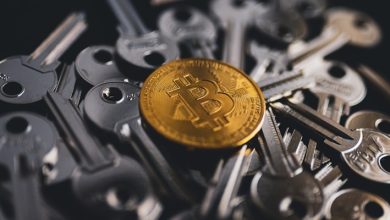Investing in Stablecoins: Pros and Cons

- Understanding Stablecoins and Their Role in Investing
- Pros of Investing in Stablecoins: Stability and Security
- Cons of Investing in Stablecoins: Limited Growth Potential
- Comparing Stablecoins to Traditional Investments
- Regulatory Challenges in the Stablecoin Market
- Tips for Safely Investing in Stablecoins
Understanding Stablecoins and Their Role in Investing
Stablecoins are a type of cryptocurrency that is designed to have a stable value, typically pegged to a fiat currency such as the US dollar or a commodity like gold. They offer investors a way to hedge against the volatility of traditional cryptocurrencies like Bitcoin and Ethereum.
One of the key advantages of stablecoins is their stability, which makes them a popular choice for investors looking to preserve their capital. They can also be used as a medium of exchange or a store of value, similar to traditional fiat currencies.
Investing in stablecoins can provide a safe haven for investors during times of market uncertainty or economic instability. They offer a way to diversify a portfolio and reduce risk exposure to more volatile assets.
However, it’s important to note that stablecoins are not without their risks. There have been concerns raised about the centralization of some stablecoin issuers and the potential for regulatory scrutiny. Investors should also be aware of the counterparty risk associated with holding stablecoins on exchanges or platforms.
Overall, understanding stablecoins and their role in investing can help investors make informed decisions about how to incorporate them into their investment strategy. By weighing the pros and cons carefully, investors can determine whether stablecoins are a suitable addition to their portfolio.
Pros of Investing in Stablecoins: Stability and Security
Investing in stablecoins offers several advantages, with stability and security being at the forefront. Stablecoins are pegged to a stable asset, such as a fiat currency or a commodity, which helps mitigate the volatility often associated with other cryptocurrencies. This stability makes stablecoins an attractive option for investors looking to protect their investments from sudden price fluctuations in the market.
Furthermore, stablecoins are backed by reserves, which provide an additional layer of security for investors. These reserves are held in a secure manner, ensuring that the stablecoin maintains its peg to the underlying asset. This level of security can help investors feel more confident in their investment decisions, knowing that their funds are safeguarded.
Overall, the stability and security offered by investing in stablecoins make them a compelling option for those looking to diversify their investment portfolio. By incorporating stablecoins into their investment strategy, investors can benefit from a more stable and secure asset that can help protect their wealth in times of market uncertainty.
Cons of Investing in Stablecoins: Limited Growth Potential
One of the main drawbacks of investing in stablecoins is the limited growth potential they offer. Unlike other types of investments such as stocks or cryptocurrencies, stablecoins are designed to maintain a stable value and are not intended to generate significant returns. This means that investors who are looking for high growth opportunities may find stablecoins to be too conservative for their investment goals.
Comparing Stablecoins to Traditional Investments
Investors often compare **stablecoins** to traditional investments to determine which option is more suitable for their financial goals. **Stablecoins** offer a unique combination of stability and liquidity that can be appealing to those looking for a safe haven for their funds. On the other hand, traditional investments like stocks and bonds have a long history of providing solid returns over time.
When comparing **stablecoins** to traditional investments, it’s essential to consider factors such as risk, return potential, and ease of access. **Stablecoins** are designed to maintain a stable value by pegging them to a fiat currency or a basket of assets. This stability can be attractive to investors who want to avoid the volatility often associated with other types of investments.
Traditional investments, on the other hand, offer the potential for higher returns but also come with a higher level of risk. Stocks, for example, can experience significant price fluctuations based on market conditions and company performance. Bonds, while generally considered safer than stocks, still carry some level of risk depending on the issuer’s creditworthiness.
In terms of access, **stablecoins** are typically more liquid than traditional investments, meaning investors can easily buy, sell, and trade them at any time. This can be advantageous for those who need quick access to their funds or want to take advantage of market opportunities as they arise.
Overall, the decision to invest in **stablecoins** or traditional investments will depend on an investor’s risk tolerance, investment goals, and time horizon. Some investors may choose to diversify their portfolio by holding a mix of both **stablecoins** and traditional investments to balance risk and return potential. Ultimately, it’s essential to carefully consider all options and consult with a financial advisor before making any investment decisions.
Regulatory Challenges in the Stablecoin Market
Regulatory challenges in the stablecoin market are a significant concern for investors looking to enter this space. The lack of clear guidelines and oversight from regulatory bodies can create uncertainty and risk for those considering investing in stablecoins. Without proper regulations in place, there is a potential for instability and fraud within the market, which could lead to significant financial losses for investors.
One of the main issues facing the stablecoin market is the classification of stablecoins by regulatory authorities. Depending on how stablecoins are categorized, they may be subject to different regulations and oversight. This lack of consistency can make it difficult for investors to understand the risks involved in investing in stablecoins and can create challenges for regulators in monitoring the market effectively.
Another regulatory challenge in the stablecoin market is the potential for money laundering and other illicit activities. Because stablecoins are often used for cross-border transactions and can be easily transferred between users, there is a risk that they could be used for illegal purposes. This has led to calls for increased regulation and oversight of stablecoin transactions to prevent abuse of the system.
Overall, regulatory challenges in the stablecoin market highlight the need for clear guidelines and oversight from regulatory bodies to protect investors and ensure the stability of the market. Without proper regulations in place, the potential for fraud, money laundering, and other illicit activities could pose significant risks to those looking to invest in stablecoins.
Tips for Safely Investing in Stablecoins
Investing in stablecoins can be a safe way to diversify your portfolio and protect against market volatility. However, it is essential to follow some tips to ensure that you are making sound investment decisions. Here are some tips for safely investing in stablecoins:
1. **Research**: Before investing in any stablecoin, make sure to conduct thorough research on the project behind it. Look into the team, the technology, and the stability mechanisms in place to ensure that the stablecoin is indeed stable.
2. **Diversify**: Just like with any other investment, it is crucial to diversify your stablecoin holdings. By spreading your investment across multiple stablecoins, you can reduce the risk of any single stablecoin underperforming.
3. **Stay Informed**: Keep yourself updated on the latest news and developments in the stablecoin market. Changes in regulations, technological advancements, or market trends can all impact the value of stablecoins.
4. **Use Reputable Exchanges**: When buying and selling stablecoins, make sure to use reputable exchanges. This will help ensure that your transactions are secure and that you are not at risk of losing your investment to fraud or hacking.
5. **Set Realistic Expectations**: While stablecoins are designed to be less volatile than other cryptocurrencies, they are not risk-free. Set realistic expectations for your investment and be prepared for some level of fluctuation in value.
By following these tips, you can safely invest in stablecoins and potentially benefit from their stability and utility in the cryptocurrency market. Remember to always do your due diligence and consult with a financial advisor if needed before making any investment decisions.



